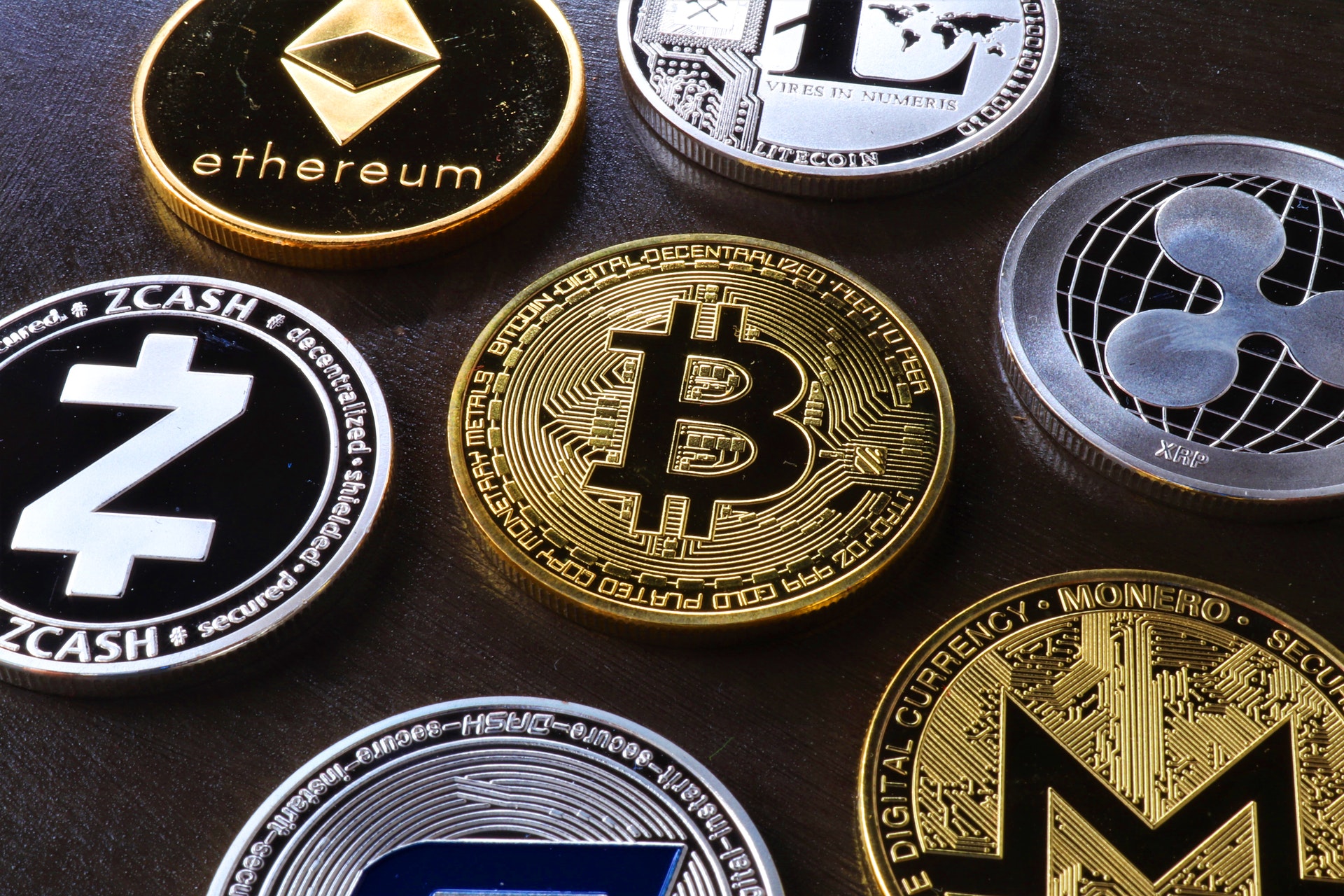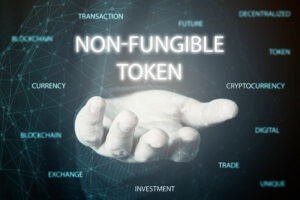Blockchain has always fascinated me but I never took the time to get a grasp of the concept of blockchain. This changed in March of this year. I decided to do a deep dive into blockchain and did some research about both blockchain and cryptocurrency. I started with the history of blockchain and cryptocurrency (especially Bitcoin where it all started) and the basic mechanics behind this. After this research, I still can’t say that I’m an expert on blockchain and cryptocurrency but I think it gave me a better understanding of the basics.
What I like about blockchain is that I believe this is one of the keystones of financial freedom. The reason for this is that the purest version of the blockchain is fully decentralized. This means that it’s not controlled by any central authority. If a central authority is not controlling it this automatically means that they can’t manipulate the system which also makes the system fully transparent. By owning cryptocurrency, Non-Fungible Tokens (NFTs), information or other digital data, only you have access to it. No government and no (financial) institutions/corporations can take it away from you or manipulate it because they don’t have access to it: it’s not confiscatable which means freedom! I know this is a very black and white approach and that there are exceptions but I’m talking about the purest form of blockchain now, leaving other variables out of the equation for now.
In this post, I will describe how the blockchain and the cryptocurrency bitcoin were founded, as well as the early adaption of this concept.
Remember 2008?
The year 2008 was a nightmare for financial titans. There was a big financial crisis that year which originated in the US. However, the rest of the world was dragged into this financial crisis as well which was considered by many economists to have been the most serious financial crisis since the Great Depression of 1929. I am of the opinion that a decentralized and not fully transparent system was the root cause of this crisis and I know that I’m not the only person who has this opinion. Why do I know for sure? Simple answer: the existence of blockchain.
The start of the Financial crisis
The housing market crisis initially found its origin in 2007 and originated because of irresponsible lending of subprime loans, to Americans who couldn’t repay their debt. Historically, when a bank issued a loan, the bank was “on the hook” for ensuring that the borrower repaid the funds. However, in the case of many subprime loans, once these loans were issued to borrowers they were then packaged or “securitized” into complex instruments, known as collateralized mortgage obligations (CMOs). These CMOs were then sold to other investors, effectively passing on the risk like a hot potato through the financial markets. This lured purchasers by the promise of high returns combined with low risk, due to purported diversification.
This sounds ridiculous, right? We are talking about financial products containing a part of the debt of American homeowners who can’t repay their debt. You might think that in order to reverse this, the part of the American homeowner’s debt who can’t repay could be cut out of the products once the problem surfaced. Unfortunately, this was not as easy as it seemed because the CMOs were extremely complex financial instruments, supported by outdated financial architecture that blended analog and digital systems. The lack of seamless digital information made quantifying the risk and understanding exactly what the CMOs were composed of impossible. Furthermore, all these CMOs were spread around the world where global investors were suddenly interconnected in a web of American mortgages. In the summer of 2008, despite the lack of financial transparency but encouraged by the access to funds from the Federal Reserve in case of further distress, Richard Fuld Jr, the CEO of Lehman Brothers stated: “we can’t fail now”. But the storm kept brewing.
Bitcoin.org
Meanwhile, on August 18, 2008, the site Bitcoin.org was registered by someone named Satoshi Nakamoto. Back then, this was no world news because nobody knew about Bitcoin and also not about Satoshi Nakamoto. Looking back, it’s pretty clear that Satoshi was designing a concept (blockchain) that would have probably prevented the toxic lack of transparency of the CMOs, hence preventing an accident waiting to happen. Unfortunately, as we all know that accident did happen.
The domino effect
On the morning of Wednesday, September 10, 2008, Richard Fuld Jr. (the guy who couldn’t fail) struggled to explain to a group of critical analysts $ 5.3 billion (!) worth of write-downs on “toxic assets” (yes: the CMOs) and a quarterly loss of $ 3.9 billion. The markets already punished Lehman the previous day with their stock dropping by 45% and another 7% the day after. Lehman was sinking and had to be bought to prevent bankruptcy. On Sunday, September 14, Barclays was ready to approve a deal to buy Lehman. Lehmann however, needed the U.S. or British government to back its trading balances for a couple of days and neither government was willing to do this. The deal backfired because of this and the U.S. government questioned Lehman on its only remaining option: filing for bankruptcy. But if Lehman filed for bankruptcy, financial firms that did business with Lehman would also lose billions, potentially triggering a domino effect of bankruptcy.
There was no way back though: on Monday, September 15, Lehman Brothers filed for bankruptcy and this ended the existence of a 164-year-old firm that evolved into the fourth-largest U.S. investment bank.
But as feared, this was only the beginning. On Tuesday, September 16, the Federal Reserve Bank of New York was authorized to lend up to $85 billion to the American International Group (AIG), the biggest insurance company in America. Because of the CMOs this huge corporation started to fall apart as well. After this several other major institutions either failed, were acquired under duress, or were subject to government takeover. These included Merrill Lynch, Fannie Mae, Freddie Mac, Washington Mutual, Wachovia and Citigroup. On October 6, 2008, three weeks after Lehman Brothers filed the largest bankruptcy in U.S. history, Lehman’s former CEO Richard Fuld Jr. found himself before Representative Henry A. Waxman, the California Democrat who chaired the House Committee on Oversight and Government Reform. Fuld Jr. said he was a victim of the collapse, blaming a “crisis of confidence” in the markets for dooming his firm. Unfortunately, we know better…..
The financial crisis cost the global economy trillions of dollars and burned bridges of trust between financial institutions and the public. And frankly said: the trust has not been restored.
The start of Bitcoin
Let’s move back now to October 2008 and Satoshi Nakamoto. On October 31, 2008, Satoshi released the Bitcoin white paper. This white paper is the holy bible for every single blockchain implementation deployed today and I expect future deployments as well. In the last paragraph of this paper, Satoshi wrote “We have proposed a system for electronic transactions without relying on trust”. When the paper was released, Satoshi had already coded the entire system.
Satoshi was not creating Bitcoin to slip seamlessly into the existing governmental and financial system. Instead, he wanted to create an alternative system that was totally free of top-down control, governed by decentralized masses (Peer 2 Peer = P2P).
One of the most powerful use cases of blockchain technology was to inscribe immutable and transparent information that could never be wiped from the face of digital history, completely accessible for all to see. In other words: full transparency. The first item to be inscribed into this functionality was a note about bank bailouts (CMOs). Personally, I think Satoshi couldn’t have given a clearer message to everyone supporting blockchain.
Mid 2009, the first exchange rate would be set for bitcoin, valuing it at 1.309 bitcoins per dollar. As stated at the beginning of this post, I don’t use a capital “b” for bitcoin. This is in order to separate the currency bitcoin from the blockchain name Bitcoin. Currently, the rate of a bitcoin is close to $50K. This can be interpreted as a missed opportunity for most people: if you had invested heavily into bitcoin in 2009 you would have been extremely rich by now but it’s far more interesting to see the actual message in this: a lot of people share Satoshi’s vision because of the fact that the value increased by over 6.5 billion percent which means that bitcoin found a very solid foundation of support.
At the end of 2010, Satoshi fully disappeared into the ether. This removed the head of Bitcoin and with it the single point of its failure: a central organ controlling it. This fully released Bitcoin into freedom and into the hands of all the people. More than 10 years later, Satoshi’s legacy continues to live on with a network of tens of thousands of access points and millions of users.
The mystery of Satoshi Nakamoto
It is still unclear who Satoshi Nakamoto is. Claims of his or her origin now cover many continents, leading back to the possibility that Satoshi might not be a single person but a group of people. The mastery Satoshi showcased across a wide scope of topics, including cryptography, computer science, economics and psychology in combination with the ability to communicate it all fluidly, feeds suspicions that Satoshi is more than one person. But then the question is: who are they? I think that this mystery may never be solved.
Final thoughts
Maybe blockchain would have had less of a supportive community if the global financial system had been healthier. In the shadow of the financial crisis of 2008, a new Black Swan event occurred (COVID-19), leading to even more support for blockchain and cryptocurrency. The fact is that Bitcoin rose like a phoenix from the ashes of the collapse of the financial markets and personally I think every big event that will challenge the transparency and integrity of financial markets will accelerate the process of full acceptance and utilization of blockchain. A few months ago, Robert Kyosaki said the following line in a radio show that I really loved: “Gold is God’s money and crypto is people’s money”. In addition to that quote, I would like to add another component to that sentence. Gold is God’s money, Crypto is people’s money and stocks are (financial) corporate money. If I had money to invest I would for sure only invest in God (precious metals) and in the People (Crypto). Why I personally prefer to keep far away from stocks at this point is something I might share with you in a future post.
In the end, I love the philosophy of blockchain. This reason, in combination with my research in blockchain and the basics of cryptocurrency, led to my decision to take the plunge into owning a very small portion of crypto. After researching the existing crypto’s and its basics, I decided in late April to buy a small amount of Cardano crypto. Not to become rich but to show my affiliation to blockchain and my support to the Cardano platform.
This wraps up the brief history of blockchain and cryptocurrency. Feel free to ask me any questions, give me additional advice or have an open discussion about this topic by contacting me. Very soon, I will write a post about the basic mechanics of blockchain so if you want to keep in the loop when I upload a new post, don’t forget to subscribe to receive a notification by e-mail.





